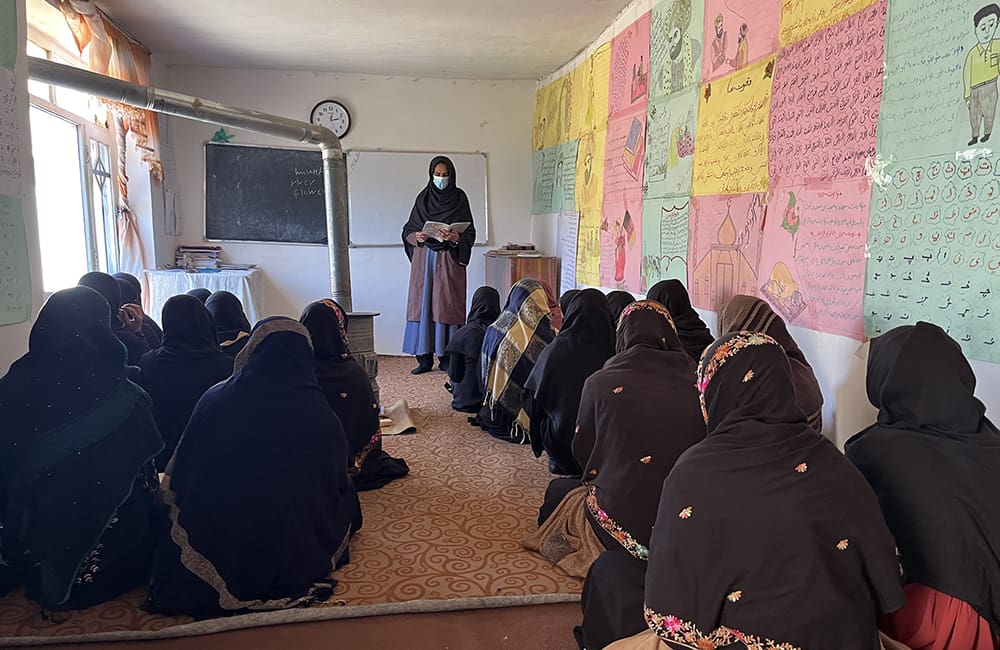Our Head of Media Holly Robertson shares insights on girls' right to education from her time in Afghanistan
One by one, female students in a central Afghanistan classroom stand up and express their greatest wish for the future: to continue their studies, in a country that has forbidden them from doing so.
“Sixth grade is nothing for us. We want to continue to high school. If we only graduate from sixth grade, we can’t do anything. We can’t get a job, we can’t go to university,” Aaisha told me when I visited her community-based education class earlier this month.
It has been 18 months since the Taliban takeover, when girls were banned from attending high school. In March 2022, girls were again left heartbroken after arriving at classes to begin the new school year, only to be told to go home.
Girls can see their dreams slipping away
Older girls have now been denied their right to learn for more than 500 days. Girls who otherwise should be going to school can see their dreams slipping away.
Aaisha, 16, has a keen appetite for learning, and over the years has harboured many ambitions. Right now, she wants to become an artist. But sadly, she’s learning to adjust those career aspirations.
If girls are unable to finish high school or go to university, she told me: “we need vocational centres so we can learn to make rugs or sewing, or other handicrafts, so we can become independent”.

Afghan girls attend a Community-Based Education class run by Save the Children.
Afghanistan is in the grips of a humanitarian catastrophe
The country is facing its worst economic and food situation ever, with 28.3 million people - more than Australia’s entire population - in need urgent of aid this year simply to survive.
Crippling drought and the economic crisis are pushing Afghanistan to the brink of collapse, with food prices, unemployment and poverty spiralling out of control.
Everyone in the country is affected, and girls are suffering more than most under the weight of growing restrictions. Save the Children research shows that girls are more likely to be going to bed hungry and showing signs of depression than boys.
Aaisha’s lessons will come to an end this month, and her entire class will have their education cut short. They remain convinced that education is their lifeline.
“Our families say we are going to be graduating, so then we are going to marry you off,” one of her classmates said.
“If we have an education, we can become a doctor or a teacher and can support ourselves, and we don’t have to get married.”
This next generation is articulate, confident and driven, ready to help their communities and rebuild their country - if only the Taliban decides to reverse course.
Right now, Afghanistan is the only country in the world preventing girls from completing their studies. And girls of all ages are painfully aware of their plight.
“It’s a very hopeless situation in Afghanistan. The doctors who are working now, they will retire, and there will not be any more doctors to replace them. Because (high school) education is not allowed for girls,” 14-year-old Laila told me.